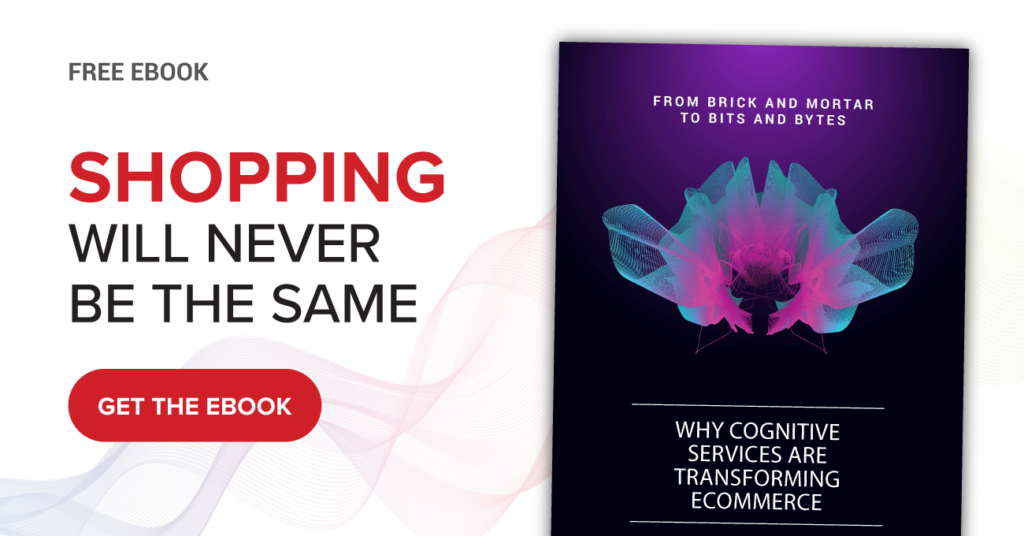IN THIS ARTICLE
Subscribe to Our Newsletter
In the middle of the 20th century, Sears’s domestic annual revenue hovered around 1% of the entire U.S. GDP (around $180 billion in today’s dollars). They were an unbeatable behemoth – selling everything from tools, to washing machines, to houses.
Fast forward to 2005. A small company known as Amazon was bringing in just 17% of Sears’s revenue. The following 5 years, Sears’s sales dropped 14% per year, while Amazon’s quadrupled. By 2016, Amazon had revenues of $136 billion against Sears’s $22 billion.
How’d this happen? Though you can’t 100% credit Sears’s decline and Amazon’s explosion to eCommerce itself, it’s played a massive role in shaping the two companies. In fact, Sears has an online store. It’s not just making products available for purchase on a website that makes or breaks a company.

The eCommerce space is an immensely competitive world. Standing out in the noise, where competition is a click away, comparisons are a search away, and innovation is ripe and common, and fundamental to every company’s strategy. eCommerce companies are always looking for ways to differentiate themselves from other companies, deliver an efficient, delightful experience, reach new markets, and make data-driven decisions.
At the forefront of eCommerce innovation are cognitive services – a broad term for machine learning, artificial intelligence, and distributed algorithms. Cognitive services allow businesses to integrate problem solving, knowledge, language, analysis, categorization and more.
Current Challenges
The Internet has changed how we discover, research, purchase, and receive goods. It’s an infinite world offering everything you could ever imagine. Everyone is well aware of this. This is great for the consumer, and a huge opportunity for any eCommerce company. However, with great opportunity come great challenges:
Competition is always lurking: Throughout the entire sales cycle, from discovery to order, competition is always right around the corner in so many different ways. It’s never been easier to compare pricing of similar products across the web, and other eCommerce storefronts are a click away. 3rd party websites make money curating comparisons in a single page. And large Internet retailers, who sell massive catalogs of items, utilize recommendations similar to your product.
Who is buying from you?: How do you truly understand who your customers are with a name, address, and email address? Who’s visiting your website, but not buying from you? What’s influencing browsers to be customers?
Spray and Pray: Deploying display ads across the entire Internet, to everyone using it, is not efficient. You need to curate and engage prospects at the individual level.
Big Trends – Where Things Are Headed
To remain competitive in the crowded eCommerce world, you must invest in emerging technologies and experiment with new platforms. But innovation isn’t easy. You need to know that some may fail. But setting your business up as an R&D department, and choosing low-risk, high-yield technologies to deliver innovative features is key.
In the last couple years, Amazon has done this. From AI assistants, to VR/AR, to delivery drones, Amazon has heavily invested in emerging technology. AI assistants have stuck, and now handle the bulk of customer service queries, and, more recently, advising shoppers in researching products. VR/AR and delivery drones haven’t hit critical mass quite yet, but are viable options of the next-generation of eCommerce, and Amazon will be ready when the time comes.
So, what are the trends that are taking the eCommerce by storm?
Personalization
84% of online shoppers would no longer buy from an organization that doesn’t account for preferences and purchasing history.
The days of spray and pray are over, and businesses are realizing that they need to curate a personal experience for each individual prospect and repeat customer.
Personalization, also known as one-to-one marketing, is utilizing tracking and predictive technology to create a personalized shopping experience for customers. This is accomplished by collecting granular details on visitors – their searches, clicks, purchases, behavior, and any external data that exists on them. This allows them to deliver more relevant recommendations, dynamically update layout for more efficient navigation, and automate interactions to retain and re-engage prospects and customers.
Localization
Localization is a simple, but powerful eCommerce tactic that determines the customer’s location (through an IP address) and delivers tailored content based on it. Not only does this build a wider audience, by enabling you to engage more personally with a wider base of customers, it also builds a strong trust between you and prospects, since the more localized the content, the more it’ll resonate with them.
Second-screen In-store
49% of customers cite not being able to touch, feel or try a product as one of their least favorite aspects of online shopping.
With online shopping booming, and brick-and-mortar locations struggling, companies are beginning to utilize technology in-store to take advantage of the benefits of online resources to increase conversions and engage their customers. In browsing in-store, consumers turn to their smartphones to compare pricing, research alternatives, or even sample the product in-store and buy it online at a later date
A quarter of online shoppers (25%) have made an online purchase from a brick-and-mortar store.
To engage with in-store shoppers, businesses are utilizing geo-proximity aware applications to stream offers and content the moment shoppers enter the store. A smartphone acts as a shopping assistant throughout sales cycle, providing additional info and as a comparison tool for other products.
Research from Deloitte (September 2016) indicates that 37% of all retail purchases last year were influenced by mobile device search, discovery, research, or price comparison. Among digital buyers, 60% researched while in-store, and 64% used a retailer’s app (ComScore for UPS, Feb 2016).
Email Automation
Email automation has come a long way, and is a core table stake of eCommerce. It’s a proven channel for increasing brand awareness, bringing back customers, and updating the database on new features and products.
However, email automation has started utilizing other advanced techniques to make it even more powerful. This includes connecting your email automation system to the behaviors and actions an individual user takes on your website, and sending personalized, tailored content to them. With that, you can send more targeted and timely emails that are more relevant to the user when they want it, whether they know it or not.
Chatbots
Business Insider predicts that 85% of customer interactions will be managed without a human by as soon as 2020.
Though online shopping has completely changed the way we buy goods, eCommerce lacks one key component that you get in a brick and mortar store – a helpful employee. At the scale at which online stores operate, having actual people staffing live chat simply isn’t economically viable.
As a result, many online stores are turning to intelligent shopping assistant bots to assist shoppers with their questions, to make recommendations, and even to check out.
Nordstrom dominated the 2017 holiday season with their Messenger chatbot, which went beyond simple predefined questions and answers and used cognitive services to truly understand what the customer was looking for and assist as needed. It offered gift recommendations, and could even assist with fulfilling the order.

Chatbots are also saving us from the dreaded customer support phone calls, waiting an hour for a representative to deal with a simple problem. Amazon, with who knows how many orders per day, has deployed chatbots to deal with most small issues that a customer faces if they need help with their order.
Want in-depth analysis? Check out our full eBook From Brick and Mortar to Bits and Bytes: Why Cognitive Services are Transforming eCommerce.










